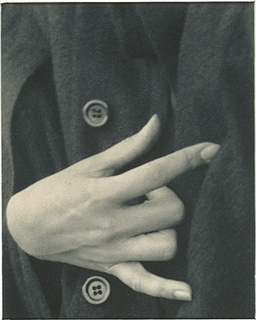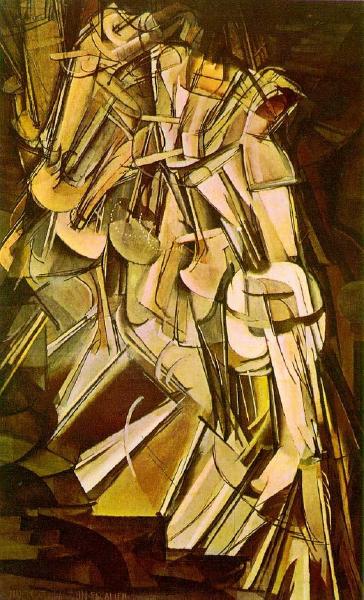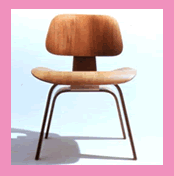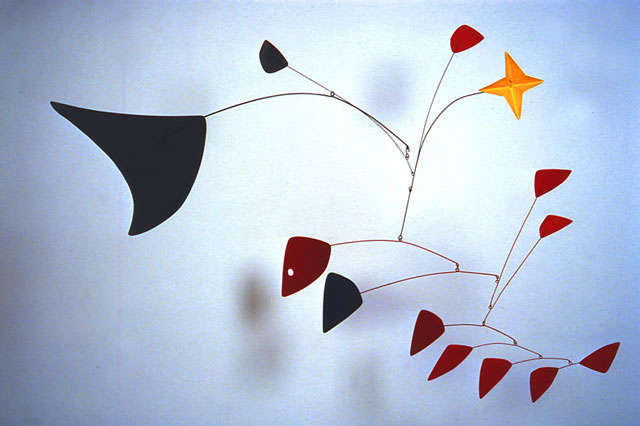Lienhard 5
Caspar David Friedrich, Wanderer, 1818
1. technology helped give artists new ideas (or even force art
in new directions)
 2. art
expresses the different way people see the world as a result of
new technology
2. art
expresses the different way people see the world as a result of
new technology
3. central to modernism was a newly important art--design
4. there are different paths by which technology can
affect art
This wasn't just a change in science and technology--you can see
the shift to "modern" in art, in literature, in psychology, in
architecture...
It happens not simply as a result of what it going on in science
and technology but rather at the same time
why?
What does it mean to see the world differently?
technology isn't just a tool, it changes the way we
experience the world, and therefore the way we think
Is modernity a result of new technology? In what sense?
- which technology?--second stage of the industrial
revolution
- new consumer goods like the sewing machine, bicycle
- assembly line
- more and more people living in cities
- new industries from electricity and chemistry
- technological change is moving even faster (faster
than
people
can easily adjust to)
Modern era was characterized by abandoning tradition
Modern art:
Lienhard uses as a first example
not the modern art people love to hate, but Frederick
Remington, most famous for art like:
Traditional art tended to show an idealized world--the way we
thought it ought to look
But after experiencing war he shifted from a John Wayne view of
the the world to one much more realistic about hardship and
sadness
the modernist question is what do you see if you drop your
assumptions--that is, tradition
The world was full of new possibilities but at the same time it
didn't seem as straightforward or easy to master any more
when you throw away tradition you have too many choices
Charles Dellschau
painted pictures of fantastic flying machines in Texas
What did it do to people's imagination to realize that
technology was making it possible to fly--already in balloons,
soon in airplanes?
What did it do to the imagination of artists when photography
became possible?
Photography allowed anyone to capture a realistic
image
 photo by Alfred Steiglitz:
photo by Alfred Steiglitz:
If photography can capture a
more realistic image than an artist can, then
artists need to define what they are doing as something other
than capturing what the eye sees
- what is accurate? what a photograph captures?
- photographers set out to make photography more
artistic--show you something you wouldn't have seen, express
feeling
- make other art less realistic--artists no longer have the
job of making an accurate visual record
- takes away much of the market for low-cost painted
portraits
- causes people to expect images to simply capture what you
can see, increasing the resistance to modern art
A quote from a site
on Stieglitz captures the change of the modern era:
Early in the twentieth
century a new spirit appeared in American life... It was a
spirit of change, of dissent--in some minds, the spirit even of
revolution. Predominantly it was an upsurge of hopefulness. New
directions seemed possible not only in politics and the arts, but
also in the quality of life as a whole. Institutions and
established ways were subjected to a critical scrutiny that had
been rare in the previous generation... Experiment replaced
acquiescence to a received tradition as defined by genteel
'custodians of culture.'
--Alan Trachtenberg, Critics of
Culture: Literature and Society in the Early 20th Century

Duchamps,
Nude
Descending at Staircase
A key moment in art was the New
York
Armory show of 1913
- Leinhard thinks it is interesting it was held in an
armory
- enough new weird modern art was shown all in one place
that people realized how much art was changing
- Marcel
Duchamp's Nude
Descending
a Staircase was the example people used most (Duchamp
was an artist who liked
challenging
people)
- It isn't what you see, in fact it is hard to see that it
is a nude descending a staircase. But in another sense
it shows the act of walking downstairs in a way a photograph
couldn't, because it shows motion. Eadweard Muybridge
had started people seeing this way with his stop action
photographs, settling
a
bet for the former governor of California that a galloping
horse has all 4 feet leave the ground at the same
time. video
- what does it mean to paint what you see--artists were
redefining this in non-common-sense ways
- Another painting from the Armory show, by Wassily
Kandinsky, which was purchased by Steiglitz

- Pablo
Picasso is the most famous artist in this process, but
there are many others. Lienhard argues that Picasso's Guernica
affects us in ways that realistic art does not, because it
speaks not to our rational minds but directly to our guts--a
primitive or child-like level inside us

Eames chair

Charles and Ray
Eames built new simpler furniture--you
may
not
like
modern
art
but
our
world is full of that kind of furniture, not old-fashioned
furniture. Think of the shock it must have been--that isn't
what a chair is supposed to look like but it does the job
well. It was a startling new
way of seeing the world. 1956
video, Ted
talk (3:40)
They designed the 1977 film Powers of Ten
(there is also a 1968
version)--explicitly about seeing the world in a new way as
a result of science.
Design--what visual approach do you take to solving the problem of
function:
How do we think about looks and function?
- can something that is purely functional look good?
- modernism says that good function can lead to good looks
- design replaces the old approach, which was to make
something and then decorate it
Or consider this piece of modernist design:

- pencil sharpener has a streamlined look
- locomotives and automobiles were designed with a
streamlined look, though they often didn't move that
smoothly through the air
- where streamlining was real was in airplanes, where it
was crucial
 Mobile
by
Alexander Calder
Mobile
by
Alexander Calder
What about music?
- throw out the traditions of formal music
- jazz music--improvisations are a whole different idea
of music
- atonality
- minimalism--John Cage 4'33"
--a piece of music consisting of 4 1/2 minutes of silence
- modern dance was similarly radical
Throw out tradition and you can do all kinds of strange
things, make people very uncomfortable,
open up
lots of new possibilities
This page written and
copyright
Pamela E. Mack
HIST 122
last updated 10/2/23

 2. art
expresses the different way people see the world as a result of
new technology
2. art
expresses the different way people see the world as a result of
new technology




